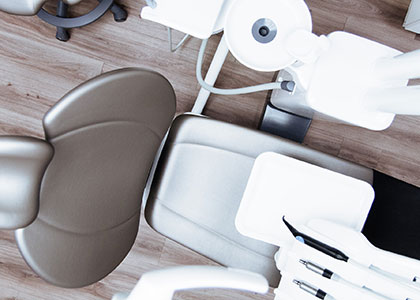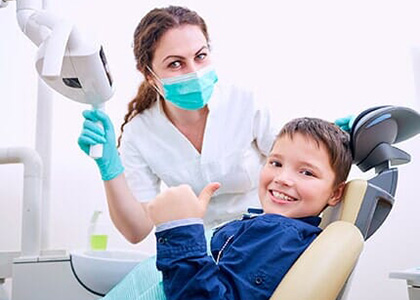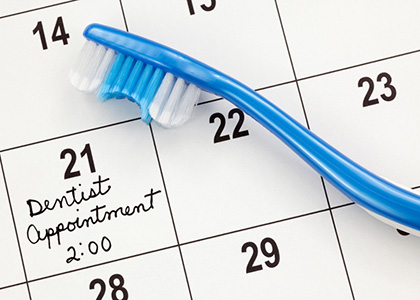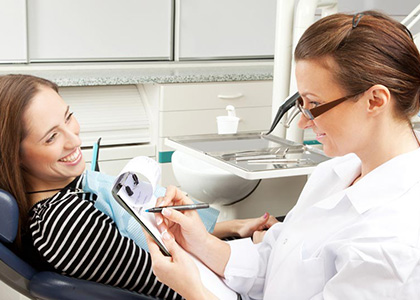Removable Dentures: A Complete Guide to Your Smile
Removable dentures offer a comfortable and aesthetic solution to the problem of missing teeth for many people. In this article, we will present the types of removable dentures, their advantages, and the details of their fitting process. Our goal is to provide a comprehensive overview of this popular dental restoration option, helping you make the best choice for your needs.
What are Removable Dentures?
Basics of Dentures
Removable dentures are devices used to replace teeth when someone has lost their natural teeth. There are two main types: partial and complete dentures. Partial dentures are used when the patient still has some of their own teeth remaining, while complete dentures replace all missing teeth.
Materials and Structure of Removable Dentures
Removable dentures can be made from various materials and consist of several components.
Base Plate The base plate provides stability and fit of the denture to the gums. It can be made from metals, acrylic, or nylon.
Teeth The teeth of the denture can be made from acrylic, composite resin, or porcelain. Composite resin and porcelain teeth provide a more natural appearance and greater durability.
Fastening Elements
Clasps: Attach the denture to existing teeth or implants.
Telescopic Elements: Provide precise fit and high stability.
Buttons: Offer stability and ease of use.
Sliders: A discreet fastening method that is comfortable and stable.
Types of Removable Dentures and Their Fastening Methods
Clasp-Fixed Dentures Clasp-fixed dentures use metal clasps that attach to existing teeth. Their advantages include stability and simple fastening, but they can have aesthetic issues and discomfort.
Telescopic Dentures Telescopic dentures consist of two parts: a fixed and a movable part. This precise fastening method provides high stability and aesthetics but can be more expensive and complex than other methods. The choice of material depends on the type of denture and the patient's individual needs. Metal-based dentures are strong and durable, while plastic and silicone dentures are lighter and more comfortable, especially for palateless or silicone dentures.
How are Removable Dentures Fitted?
The fitting process for removable dentures involves several steps.
Consultation and Examination: The process starts with a thorough examination where the dentist assesses the patient's oral condition. The patient's needs and expectations are discussed, and the dentist recommends the most suitable dental solution.
Impression Taking: The dentist takes an impression of the patient's teeth and gums. This impression provides an exact mold of the oral anatomy. Various materials that quickly solidify are used during impression taking, creating an accurate replica of the teeth and gums.
Denture Design and Manufacturing: Based on the impression, the dental technician creates the custom removable denture. The design of the denture considers the patient's bite pattern, teeth color, and shape to achieve the most natural appearance.
Trial and Fitting: The patient tries on the finished denture. At this point, the dentist checks the fit and comfort of the denture. If necessary, the denture is refined to ensure perfect fit and comfort. This step may be repeated multiple times to achieve the best result.
Finalization and Delivery: Once the denture meets all criteria, it is finalized and handed over to the patient. The dentist explains in detail how to use, maintain, and clean the denture to ensure long-term satisfaction.
Follow-up Examinations: Initial periods require regular follow-up exams to check the proper function and comfort of the denture. The dentist may make further adjustments as needed and provide advice on daily usage.
Maintenance of Removable Dentures
Cleaning Guide
Proper cleaning of removable dentures is essential for their long-term use and maintaining oral hygiene. They should be thoroughly cleaned daily with special cleaning solutions and brushes. It's important to remove and clean the dentures overnight to prevent the proliferation of bacteria and the development of unpleasant odors.
Breaking in Dentures
The initial period of using new dentures can be challenging as the mouth adjusts to the new appliance. It's recommended to gradually increase the wearing time of the dentures and pay attention to any discomfort. Regular follow-up visits help make necessary adjustments.
Life with Removable Dentures
Patients living with removable dentures report numerous positive experiences, among the most frequently mentioned are:
Aesthetic Appearance One of the greatest benefits for many patients is the aesthetic improvement provided by removable dentures. Replacing lost teeth restores a natural smile, significantly boosting self-confidence.
Restored Chewing Ability Removable dentures restore the ability to chew, allowing for a varied and nutritious diet as the dentures provide the necessary biting force and stability.
Improved Speech Replacing lost teeth also improves speech, as teeth are essential for proper sound production.
Comfort and Stability Modern removable dentures are comfortable and stable, allowing patients to wear them all day without discomfort.
Social and Psychological Benefits Using removable dentures not only provides physical benefits but also psychological ones. The aesthetic improvement and restored chewing ability contribute to increased self-esteem, positively affecting social relationships and overall quality of life.
Removable dentures offer numerous advantages, including better aesthetic appearance, restored chewing ability, and comfortable wear. It's important to properly maintain and clean them to enjoy these benefits long-term.
Learn more about our removable dentures and schedule a consultation today!




















